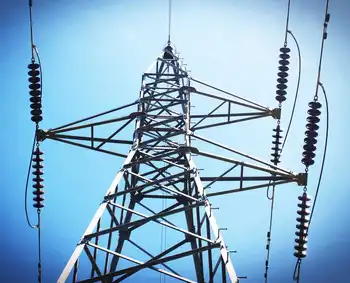Nuclear industry hiring for growth, retirements
AUGUSTA, GEORGIA - The Southern Co. believes it can break ground on the country's first nuclear plant in 30 years, but it will need a new generation of workers to run it.
Plans for building a wave of nuclear reactors would create a need for 12,000 to 21,000 new workers ranging from specially trained maintenance crews to nuclear physicists and engineers. The need for labor is compounded since more than a third of the country's existing nuclear workers will be eligible for retirement in four years.
To cope with the demand, nuclear power firms nationwide are partnering with more than 40 community colleges on a new curriculum designed to train entry-level workers and give them a head start when it comes to finding a job.
In Georgia, Augusta Technical College began accepting applications in April from students interested in a two-year course to prepare them for entry-level jobs at the Southern Co.'s expanded Plant Vogtle and elsewhere.
If the Atlanta-based Southern Co. wins federal approval to build the reactors, the company hopes they will be fully operational by 2017 and provide 850 local jobs. Power companies have submitted 17 applications to build and operate nuclear reactors across the country, from Texas and Michigan to Missouri and South Carolina.
"We're putting together work force development pipelines," said Andrew Bouldin, who helps coordinate recruiting for Southern Co.'s nuclear subsidiary. "The technical colleges have a good track record of teaching technical education, and it's a great way to make sure we have technically savvy candidates."
Nuclear power companies have not faced a large need to hire workers for decades. All the nation's 104 operating reactors won permission to build by 1978. By the late 1970s, the industry was stalling because a bad economy cut the overall need for electricity and soaring interest rates made nuclear plants expensive to build.
In 1979, a nuclear meltdown at Three Mile Island in Pennsylvania turned public sentiment against the industry. Hiring dwindled as companies shied away from new reactors. Meanwhile, safety improvements required after the accident caused delays in plants where building was under way, further reducing the need for new employees.
Many of the workers who were hired during that period are approaching the end of their careers. A 2009 survey by the Washington-based Nuclear Energy Institute showed 38 percent of industry workers will be eligible for retirement by 2014.
"It's not worrisome, but it's something we need to plan for," said Carol Berrigan, the institute's senior director of industry infrastructure. "We haven't had the need to bring people in because we were pretty much fully staffed for quite some time."
One need is for workers who can monitor control systems, perform routine maintenance and check for radiation. Nuclear plants need far more of these technicians than higher-level plant operators, said Bruce Meffert, who launched a training program in 2004 at Linn State Technical College in Missouri.
Utilities once had better success hiring staff from the U.S. Navy, which trains sailors for its nuclear-powered fleet. However, the size of the fleet has shrunk, and the Navy now pays better retention bonuses to keep its skilled workers, Meffert said.
He began the program after an official at power utility AmerenUE told him about the difficulty of finding new radiation protection workers. The firm operates a nuclear power plant in Missouri.
"There just weren't schools that put out people that met the requirements," Meffert said.
Given the lack of training programs, officials with the Nuclear Energy Institute worked with Meffert and other educators to create a standard, two-year curriculum that will be offered at more than 40 community colleges nationwide. Besides fulfilling basic state requirements in the liberal arts, students take classes in mathematics, electrical engineering technology and learn about mechanical controllers, nuclear reactors, radiation protection and the utility industry.
The first students are set to graduate in May from pilot programs at Chattanooga State Technical Community College in Tennessee and Salem Community College in New Jersey.
Latricia Lloyd, 48, enrolled in Chattanooga after a battery maker outsourced her sales job and cut her pay.
"The nuclear industry is a growth industry right now," she said. "It's a very stable job."
Robert Bumpus, 38, enrolled at Salem Community College because he wanted to enter the nuclear industry after working as a church pastor and a university letter carrier. Power utility PSEG, which operates two nuclear plants near Bumpus' home, gave him a scholarship.
"I feel pretty confident that I'll have the opportunity to start working very soon after graduation," said Bumpus, who has not yet received a job offer but remains optimistic. "I would assume they're going to want a return on their investment."
Analysts say U.S. colleges and universities provide a more reliable supply of engineers and other nuclear scientists, although the number of graduates fluctuates with the industry's ups and downs. Professors credit increased U.S. funding with helping boost undergraduate enrollment in nuclear engineering from a low of 480 students in 1999 to 1,933 students three years ago.
Sekazi Mtingwa, a senior lecturer at the Massachusetts Institute of Technology, chaired a panel studying the nuclear work force for the American Physical Society. After years of flagging interest, he said more students are studying nuclear science.
"The interest is rising right now," he said. "I think the main thing right now is jobs."
Related News

Covid-19 is reshaping the electric rhythms of New York City
NEW YORK - At his post 150 miles up the Hudson, Jon Sawyer watches as a stay-at-home New York City stirs itself with each new dawn in this era of covid-19.
He’s a manager in the system that dispatches electricity throughout New York state, keeping homes lit and hospitals functioning, work that is so essential that he, along with 36 colleagues, has been sequestered away from home and family for going on four weeks now, to avoid the disease.
The hour between 7 a.m. and 8 a.m. once saw the city bounding to life. A sharp spike would erupt on the system’s…




